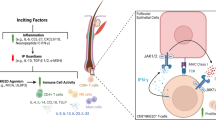Abstract
Background
A possible causative role for human papilloma virus (HPV) in cutaneous squamous cell carcinoma (cSCC) development has been suggested but the data in the literature remain discordant.
Objective
The aim of this study was to investigate the possible association between HPV-16 and the risk of cSCC development.
Materials & Methods
Between January 2009 and April 2010, 153 patients with previous cases of cSCC or BCC (enrolled in a previous study, 2003–2005, and tested for antibodies against 28 HPV types) were investigated at a follow-up visit. The risk of developing a new cSCC for each of the cutaneous HPV types was computed separately for HPV-16-positive and in HPV-16-negative patients.
Results
The five-year probability of cSCC recurrence was increased among subjects with cSCC who were seropositive for HPV-16 at baseline and seropositive for a cutaneous HPV type, but not among those who were HPV-16-negative. We also investigated the association between p53, BKV, and JCV antibodies and an increased risk of cSCC recurrence, however, no associations were observed.
Conclusion
HPV-16 may play a permissive role for some cutaneous HPVs, thus increasing the risk of cSCC.
Similar content being viewed by others
References
Rogers HW, Weinstock MA, Harris A, et al. Incidence estimate of nonmelanoma skin cancer in the United States, 2006. Arch Dermatol 2010; 146: 283–7.
Stratigos A, Garbe C, Lebbe C, et al. Diagnosis and treatment of invasive squamous cell carcinoma of the skin: European consensus-based interdisciplinary guideline. Eur J Cancer 2015; 51: 1989–2007.
Kiviat NB. Papillomaviruses in non-melanoma skin cancer: epidemiological aspects. Semin Cancer Biol 1999; 9: 397–403.
Vajdic CM, McDonald SP, McCredie MR, et al. Cancer incidence before and after kidney transplantation. JAMA 2006; 296: 2823–31.
Attner P, Du J, Nasman A, et al. The role of human papillomavirus in the increased incidence of base of tongue cancer. Int J Cancer 2010; 126: 2879–84.
Riddel C, Rashid R, Thomas V. Ungual and perungual human papillomavirus-associated squamous cell carcinoma: a review. J Am Acad Dermatol 2011; 64: 1147–53.
Gewirtzman A, Bartlett B, Tyring S. Epidermodysplasia verruciformis and human papilloma virus. Curr Opin Infect Dis 2008; 21: 141–6.
Paradisi A, Waterboer T, Sampogna F, et al. Seropositivity for human papillomavirus and incidence of subsequent squamous cell and basal cell carcinomas of the skin in patients with a previous non-melanoma skin cancer. Br J Dermatol 2011; 165: 782–91.
Waterboer T, Sehr P, Michael KM, et al. Multiplex human papillomavirus serology based on in situ-purified glutathione s-transferase fusion proteins. Clin Chem 2005; 51: 1845–53.
de Villiers EM, Fauquet C, Broker TR, et al. Classification of papillomaviruses. Virology 2004; 324: 17–27.
Amiraraghi N, Scott RA, Balaji N, Yaneza MMC. Human papillomavirus 16 and p16 positive nasal cutaneous squamous cell carcinoma in immunocompetent men in their twenties. J Laryngol Otol 2019; 133: 348–52.
Bouvard V, Baan R, Straif K, et al. A review of human carcinogens. Part B. Biological agents. Lancet Oncol 2009; 10: 321–2.
Casabonne D, Lally A, Mitchell L, et al. A case-control study of cutaneous squamous cell carcinoma among Caucasian organ transplant recipients: the role of antibodies against human papillomavirus and other risk factors. Int J Cancer 2009; 125: 1935–45.
Andersson K, Waterboer T, Kirnbauer R, et al. Seroreactivity to cutaneous human papillomaviruses among patients with nonmelanoma skin cancer or benign skin lesions. Cancer Epidemiol Biomarkers Prev 2008; 17: 189–95.
La Placa M, Ambretti S, Bonvicini F, et al. Presence of high-risk mucosal human papillomavirus genotypes in primary melanoma and in acquired dysplastic melanocytic naevi. Br J Dermatol 2005; 152: 909–14.
Nakajima H, Teraishi M, Tarutani M, et al. High prevalence of coinfection with mucosal high-risk type HPV (HR-HPV) and cutaneous HR-HPV in Bowen’s disease in the fingers. J Dermatol Sci 2010; 60: 50–2.
Feltkamp MC, Broer R, di Summa FM, et al. Seroreactivity to epidermodysplasia verruciformis related human papillomavirus types is associated with nonmelanoma skin cancer. Cancer Res 2003; 63: 2695–700.
Croci-Torti A, Tamalet C, Segondy M, Dandurand M, Meunier L, Stoebner PE. Human papillomavirus type 16-induced skin squamous cell carcinoma located on the groin of immunocompetent patients. Br J Dermatol 2014; 170: 7534.
Andersson K, Luostarinen T, Söderlund Strand A, et al. Prospective study of genital human papillomaviruses and nonmelanoma skin cancer. Int J Cancer 2013; 133: 1840–5.
Garland SM, Hernandez-Avila M, Wheeler CM, et al. Quadrivalent vaccine against human papillomavirus to prevent anogenital diseases. N Engl J Med 2007; 356: 1928–43.
Kalogeropoulos CD, Moschos MM. Advances in diagnosis and treatment of HPV ocular surface infections. Med Hypothesis Discov Innov Ophthalmol 2015; 4: 31–5.
D’Souza G, Dempsey A. The role of HPV in head and neck cancer and review of the HPV vaccine. Prev Med 2011; 53: S5–11.
Stanley M. HPV vaccination in boys and men. Hum Vaccin Immunother 2014; 10: 2109–11.
Author information
Authors and Affiliations
Corresponding author
Additional information
Acknowledgments and disclosures
Acknowledgments: this work stems from baseline data collected within the framework of an EU project (grant: QLK2-CT-2002-01179). Financial support: the follow-up activities were supported, in part, by the “Progetto Ricerca Corrente” of the Italian Ministry of Health, Rome, Italy. Conflicts of interest: none.
About this article
Cite this article
Paradisi, A., Waterboer, T., Ricci, F. et al. Concomitant seropositivity for HPV 16 and cutaneous HPV types increases the risk of recurrent squamous cell carcinoma of the skin. Eur J Dermatol 30, 493–498 (2020). https://doi.org/10.1684/ejd.2020.3874
Accepted:
Published:
Issue Date:
DOI: https://doi.org/10.1684/ejd.2020.3874




